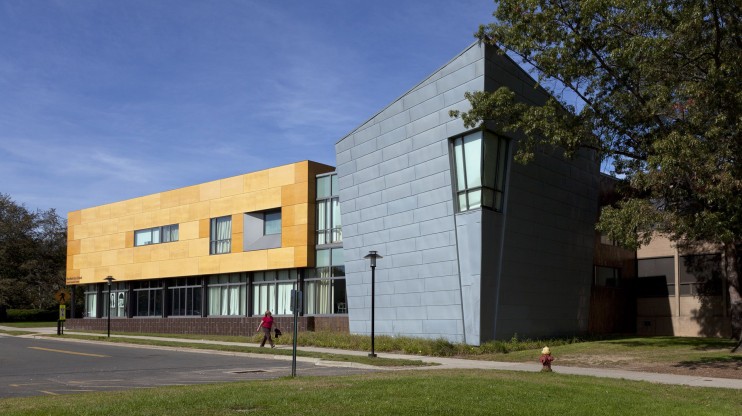LED Lighting and Lighting Controls Upgrade
The Challenge
Established in 1957, the University of Hartford (UHart) is a private university of over 6,000 students in West Hartford, Connecticut. Its 350-acre main campus extends into neighboring Hartford and Bloomfield.
UHart has seen significant growth in the last two decades with the addition of its new residence hall, Hawk Hall, and the $34 million Integrated Science, Engineering, and Technology complex.
To keep up with the modern expectations of educational facilities and support its mission to become a future-facing institution, the University of Hartford committed resources to reduce its carbon footprint and encourage green solutions.
This initiative included a campus-wide lighting overhaul project, replacing old incandescent and fluorescent lighting with energy-efficient LED lighting.
UHart’s goals for this project included:
- Increasing energy savings while lowering the overall operating cost of the University
- Uncovering and maximizing available utility incentives
- Improving in-house understanding of new control systems for lighting
Some additional project constraints included:
- COVID protocols that limited accessibility to facilities at certain times of day
- A diverse mix of building sizes, types, and age
- Concerns over performing work on occupied buildings
The Solution
To achieve UHart’s goals, old incandescent and fluorescent lighting was replaced with energy-efficient LED lighting across the campus.
The Mantis Team installed occupancy sensors in areas that did not previously have them, significantly reducing light usage when rooms and hallways are empty. Additionally, the automated daylight savings sensors were installed to control the amount of light needed in a room while natural light enters.
Because we installed integrated control systems in conjunction with the LED lighting technology, the University gained granular control of its lighting and customized it to different individual parameters for the occupants of other rooms. (i.e., if one professor likes their classroom brighter or darker.)
The Results
- Reduced its lighting and maintenance costs by nearly $1,000,000 per year
- Saves over 5,000,000 kWh annually
- Funded nearly 50% of the project costs through utility incentives
- Total utility incentive was nearly $2.7 million, resulting in a net cost of $2.9 million and a payback period of roughly 3 years
- Rooftop unit optimization using sensors to setback units, resulting in units running when needed vs constantly
